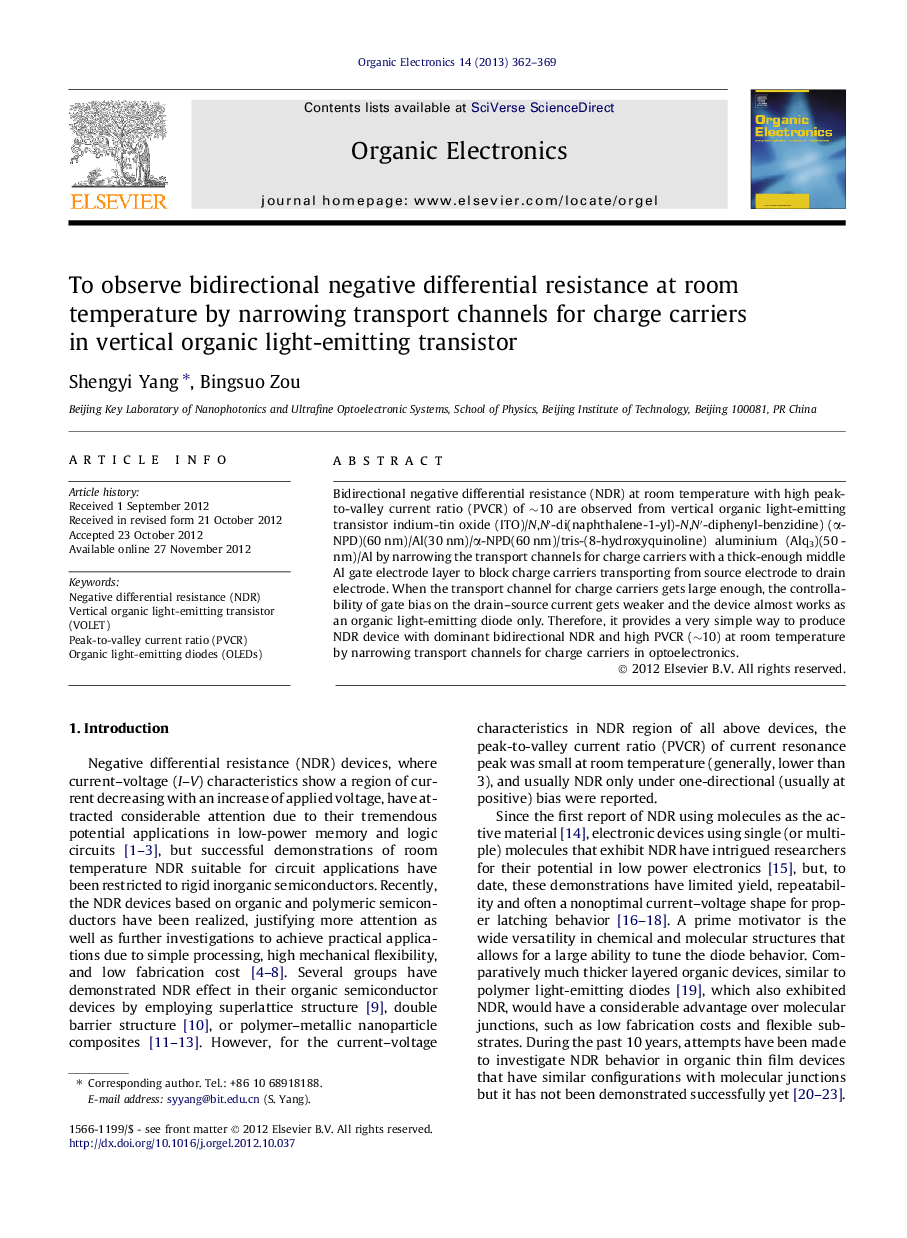| Article ID | Journal | Published Year | Pages | File Type |
|---|---|---|---|---|
| 1263977 | Organic Electronics | 2013 | 8 Pages |
Bidirectional negative differential resistance (NDR) at room temperature with high peak-to-valley current ratio (PVCR) of ∼10 are observed from vertical organic light-emitting transistor indium-tin oxide (ITO)/N,N′-di(naphthalene-1-yl)-N,N′-diphenyl-benzidine) (α-NPD)(60 nm)/Al(30 nm)/α-NPD(60 nm)/tris-(8-hydroxyquinoline) aluminium (Alq3)(50 nm)/Al by narrowing the transport channels for charge carriers with a thick-enough middle Al gate electrode layer to block charge carriers transporting from source electrode to drain electrode. When the transport channel for charge carriers gets large enough, the controllability of gate bias on the drain–source current gets weaker and the device almost works as an organic light-emitting diode only. Therefore, it provides a very simple way to produce NDR device with dominant bidirectional NDR and high PVCR (∼10) at room temperature by narrowing transport channels for charge carriers in optoelectronics.
Graphical abstractFigure optionsDownload full-size imageDownload as PowerPoint slideHighlights► Room temperature light emission and bidirectional NDR with high peak-to-valley current ratio of ∼ 10 are observed from VOLET. ► 30 nm Al layer is thick enough for the middle Al electrode layer to block charge carriers transporting from source electrode to drain electrode. ► Controllability of gate bias on IDS gets weaker and the device only works as an OLED when the transport channel for charge carriers is large enough. ► It provides a very simple way to observe dominant bidirectional NDR by narrowing the transport channel of charge carriers in optoelectronics.
